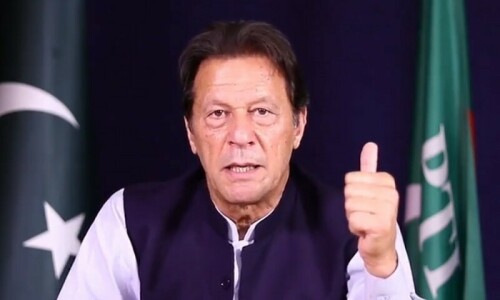SRINAGAR: Children as young as nine detained, protests and tear gas, torture, businesses shut and no mobiles or internet: it’s now been two months of misery in India-held Kashmir.
India stripped the disputed region of Jammu and Kashmir of its autonomy on Aug 5 and said it would split the territory in two, after sending in tens of thousands of troops to impose a lockdown and detaining the region’s top politicians.
Indian Prime Minister Narendra Modi said the audacious move was aimed at making the occupied valley a “paradise once more”.
Since 1989, tens of thousands of people, mostly civilians, have died in an uprising against Indian occupation by Kashmiri fighters wanting all of Kashmir to be part of Pakistan or an independent state.
Evidence on the ground suggests that local people are livid about India’s latest move, with regular demonstrations, business owners refusing to open their premises and children kept out of schools.
More than 4,000 people have been arrested since Aug 5, when Modi govt ended special status of disputed territory
The Indian government claims that most people in the occupied valley, the main hotbed of resistance to Indian occupation, support the move and that opposition comes only from elements backed by Pakistan.
Indian troops have killed several Kashmiris in gunbattles and police said they intercepted weapons bound for Kashmir.
Prime Minister Imran Khan last week told the UN General Assembly that India could unleash a “bloodbath” in the Muslim-majority region, warning of the risk of nuclear war.
More than 4,000 people have been arrested since Aug 5, including 144 minors, around 1,000 of whom remain in custody, some under a law that allows suspects to be held for up to two years without charge.
Landlines have been restored but mobile phones and the internet remain snapped in most of the valley, home to around seven million people.
India insists “normalcy” is being restored.
Around 100 civilians and 400 members of the Indian security forces have been injured in clashes since Aug 5, authorities say.
Locals have blamed the authorities for the deaths of four civilians, including a mother who choked to death after tear gas was fired into her home.
Outside the main city Srinagar, young men told AFP last month that soldiers tortured them. The military strongly denies this.
UN human rights chief Michelle Bachelet has said she is “deeply concerned” while Washington has called for a “rapid” lifting of restrictions.
Published in Dawn, October 5th, 2019















































Dear visitor, the comments section is undergoing an overhaul and will return soon.